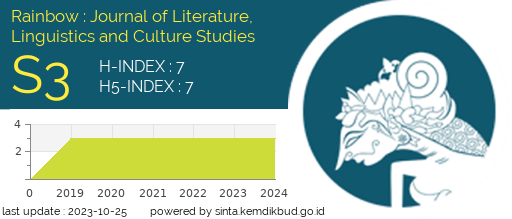The Characteristics of Korean Artists in Pronouncing English Words on Korean Reality Shows: A Generative Phonology Perspective
DOI:
https://doi.org/10.15294/rainbow.v13i1.1270Keywords:
common errors , distinctive features, korean phonetics, phonological processAbstract
South Korea's cultural industry, known as the "Korean Wave" (Hallyu), has gained international popularity, particularly among younger generations, with its media attracting global attention. Prior studies have extensively investigated the pronunciation of English words by Koreans, although these studies have not yet approached it from a phonological perspective. This study seeks to examine the pronunciation of English by Korean artists, considering the widespread acquisition of English for many purposes globally. It aims to identify common errors made by native Korean speakers in their English pronunciation and its reasons, specifically from a phonological standpoint. Qualitative analysis was conducted on data acquired from YouTube. The findings indicate that Koreans encounter difficulties with some English phonemes due to limited exposure. In phonological perspective, errors commonly seen in Korean include phoneme substitution, assimilation, vowelization, epenthesis, monophthongization, and diphthongization, with the highest number of epenthesis. These errors can be classified according to phonological processes, specifically, those linked to the place and manner of articulation, where sounds are produced whether or not obstruents are involved. In addition, Koreans tend to enhance plosive sounds with tension and aspiration. These findings enhance comprehension of linguistic discrepancies and can bolster language education endeavors.
Downloads
Published
Article ID
1270Issue
Section
License
Copyright (c) 2024 Regina Galuh Prameswari Pratidina, Agus Subiyanto (Author)

This work is licensed under a Creative Commons Attribution 4.0 International License.






